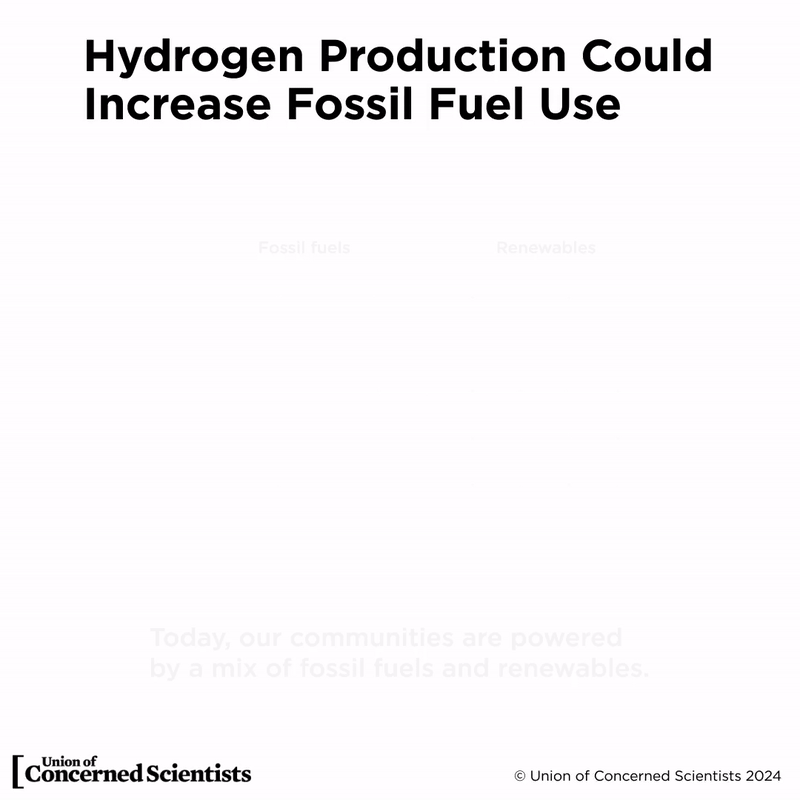For hydrogen to have any role in the clean energy transition, it must be cleanly produced.
The Section 45V Clean Hydrogen Production Tax Credit (“45V”), passed as part of 2022’s landmark climate investment law, was specifically designed to spur the shift away from today’s dirty methods of hydrogen production to truly clean production processes instead.
But as I’ve previously written, it turns out that under the 45V credit eligibility framework, there are a lot of ways for hydrogen production to look clean while actually resulting in substantial increases in carbon emissions overall—not to mention electricity price spikes, worsened air pollution, delayed retirements of heavily polluting coal plants, increased reliance on gas plants, and an undermined business case for the exact types of hydrogen production projects the tax credit was intended to bring about.
The only way to defend against such disastrously bad outcomes is to get the policy implementation details right from the start, such that we can be confident that claimed—and subsidized—“clean hydrogen” really and truly is clean hydrogen.
For electrolytically produced hydrogen, where electricity is used to split water into hydrogen and oxygen, that means requiring proof that the electricity used to power an electrolyzer is carbon-free, as well as that use of that electricity does not inadvertently cause increases in emissions elsewhere on the electric grid.
An animation by my colleague Nick Davis-Iannaco cuts through the complexity and illustrates one of the fundamental issues at play:

Criteria to ensure “clean” means clean
In December 2023, Treasury issued proposed rules for 45V that reckoned with these issues by embracing use of the so-called “three-pillars framework” for electrolytically produced hydrogen. This framework enables regulators to verify that the direct and significant indirect emissions associated with electrolyzer operations are zero.
The three-pillars framework functions by requiring that the carbon-free electricity powering an electrolyzer be:
- Additional, or “incremental,” to the system, meaning newly added or making use of existing resources that were previously going unused;
- Deliverable, meaning produced in the same general geographic region as the electrolyzer claiming its use; and
- Time-matched, meaning the timing of electricity production matches the timing of electricity consumption.
Numerous analyses have demonstrated the necessity of such an approach, as well as the fallibility—and thus legal vulnerability—of weaker approaches that either ignore or excuse broader emissions impacts.
Still, a small set of vested interests have found themselves on the outs under the proposed framework, unable to access what could have been massive payouts from looser implementation of the lucrative incentive. As a result, they’ve been subjecting the administration’s approach to relentless attacks, claiming that adhering to this framework would irreparably harm the nation’s clean energy transition. Moreover, they’ve been pressuring their representatives to advocate for a weakening of the final rule, too, by threatening headlines about lost jobs.
But the tell is in the asks.
Each vested interest is lobbying for its own specific carveout, which again and again just so happens to enable that specific interest to reap a staggering windfall—and never, it turns out, to actually further the nation’s ability to achieve climate targets.
An additionality carveout is not in the public interest
While the list of lobbied loopholes from the proposed three-pillars framework is shamelessly long, one hoped-for exemption has garnered outsized attention compared to all the rest: An additionality carveout, whereby a large amount of existing carbon-free generation would be able to count as an eligible clean resource.
But as the animation above simply but clearly conveys, in the absence of rigorous policies, diverting existing carbon-free generation to power electrolyzers could result in gas- and coal-fired power plants ramping up to fill the gap, painfully reversing hard-won power sector progress and sending emissions soaring as a result.
Moreover, such an exemption would allow hydrogen producers to offload onto captured ratepayers the cost of grid upgrades prompted by their new large loads, and force ratepayers to cover the cost of procuring higher-priced electricity generation, too.
And the kicker: Greenlighting this exemption would subsidize the buildout of hydrogen infrastructure misaligned with that ultimately required by the clean energy transition, muting precisely the signals needed to shape, sharpen, and direct the industry accordingly.
Treasury must not bow to bad-faith attacks
Our nation’s clean energy transition will be built upon the foundations now being laid through implementation of early policies and incentives.
This is exactly the time for high-integrity standards ensuring high-integrity outcomes; to drive investments in forward-facing projects, not carve-outs for industries of the past.
Treasury got it right with the December 2023 proposal—an opinion shared by over 60 members of Congress, who called on Treasury to hold the line rather than “eroding climate progress” by relaxing these standards. As the 45V rules are finalized, regulators must stay the course.

 1 month ago
25
1 month ago
25


